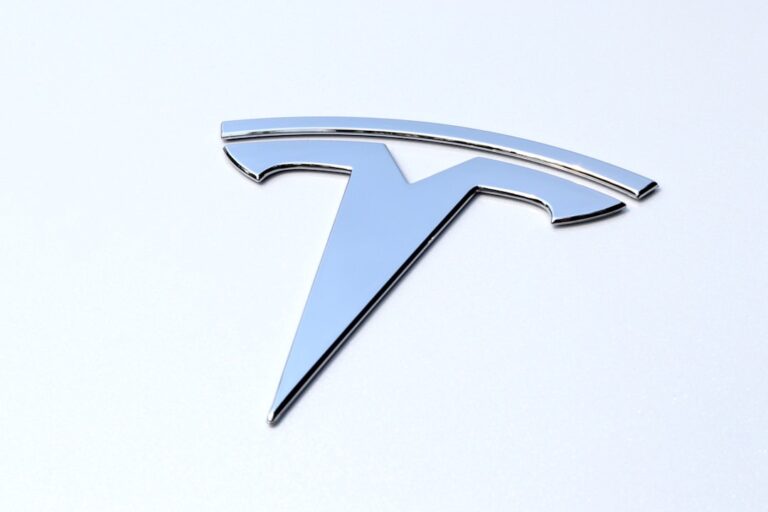
**Title: Evaluating the Tesla Solar Roof: A Comprehensive Guide to Costs, Savings, and Long-Term Benefits** **
The Tesla Solar Roof represents a significant innovation in the renewable energy sector, merging aesthetics with functionality. Unlike traditional solar panels that are mounted on rooftops, the Tesla Solar Roof integrates solar technology directly into the roofing material itself. This design not only provides energy generation capabilities but also enhances the overall appearance of a home.
The tiles are made from tempered glass, which is both durable and visually appealing, allowing homeowners to maintain their architectural style while harnessing solar energy.
The Solar Roof is designed to capture sunlight efficiently, converting it into electricity that can power a home or be stored in a Tesla Powerwall for later use.
This system is particularly appealing to environmentally conscious consumers who wish to reduce their carbon footprint while enjoying the benefits of modern technology. As more homeowners seek sustainable solutions, the Tesla Solar Roof stands out as a compelling option in the renewable energy landscape. **
Key Takeaways
- Tesla Solar Roof is a roofing system that integrates solar panels into traditional roofing materials, providing a more aesthetically pleasing and efficient way to harness solar energy.
- Factors to consider in calculating the break-even point for Tesla Solar Roof include the initial cost, potential savings on energy bills, and available incentives or rebates.
- The initial cost of Tesla Solar Roof varies depending on factors such as the size of the roof, complexity of the installation, and any additional features or upgrades.
- Potential savings from Tesla Solar Roof come from reduced energy bills, potential income from selling excess energy back to the grid, and the longevity of the system.
- Calculating the payback period for Tesla Solar Roof involves considering the initial cost, potential savings, and any financing options to determine how long it will take to recoup the investment.
- Long-term benefits of Tesla Solar Roof include reduced reliance on traditional energy sources, increased home value, and contributing to a more sustainable environment.
- Financing options for Tesla Solar Roof may include loans, leases, or power purchase agreements, each with their own benefits and considerations.
- In conclusion, whether Tesla Solar Roof is worth it depends on individual circumstances, including the cost, potential savings, and long-term benefits, as well as personal values and priorities.
Factors to Consider in Calculating Break-Even Point**
When evaluating the financial viability of the Tesla Solar Roof, several factors come into play that can influence the break-even point. The break-even point is the moment when the total savings from energy production equals the initial investment made in the solar roof system. Key elements include local electricity rates, available incentives, and the specific energy needs of the household.
Understanding these variables is crucial for homeowners considering this investment. Additionally, regional climate conditions can significantly impact energy production. Areas with abundant sunlight will naturally yield higher energy outputs, leading to quicker returns on investment.
Homeowners should also consider their current energy consumption patterns and how they might change over time. For instance, if a family plans to purchase electric vehicles or expand their home, these factors could alter their energy needs and affect the overall savings generated by the solar roof. **
Initial Cost of Tesla Solar Roof**

The initial cost of installing a Tesla Solar Roof can be a significant consideration for potential buyers. As of now, estimates suggest that the cost can range from $15 to $30 per square foot, depending on various factors such as roof size, complexity, and local labor rates. This price point may seem steep compared to traditional roofing materials; however, it’s essential to factor in the long-term savings and energy production capabilities that come with this investment.
Moreover, Tesla offers a comprehensive quote process that allows homeowners to receive an accurate estimate based on their specific needs. This process includes an assessment of the existing roof structure and any necessary modifications. While the upfront costs may be higher than conventional roofing options, many homeowners find that the long-term benefits justify the initial expenditure, especially when considering potential tax credits and rebates available for solar installations.
**
Potential Savings from Tesla Solar Roof**
| Roof Type | Estimated Savings |
|---|---|
| Asphalt Shingle | Up to 50% |
| Tile | Up to 40% |
| Metal | Up to 30% |
One of the most attractive aspects of the Tesla Solar Roof is its potential for significant savings on electricity bills. By generating clean energy from sunlight, homeowners can reduce or even eliminate their reliance on grid electricity. Depending on local utility rates and energy consumption patterns, some users report savings of up to 80% on their monthly electricity bills after installing a solar roof.
In addition to direct savings on utility bills, there are other financial incentives to consider. Many states offer tax credits and rebates for solar installations, which can substantially lower the overall cost of the system. Furthermore, as energy prices continue to rise, homeowners with solar roofs are insulated from these increases, providing additional long-term financial security.
The combination of reduced energy costs and available incentives makes the Tesla Solar Roof an appealing option for many households. **
Calculating the Payback Period**
Calculating the payback period for a Tesla Solar Roof involves determining how long it will take for savings to offset the initial investment. This period can vary widely based on several factors, including installation costs, local electricity rates, and available incentives. On average, homeowners can expect a payback period ranging from 6 to 12 years, depending on their specific circumstances.
To accurately assess this timeframe, homeowners should consider their average monthly electricity usage and how much of that can be offset by solar production. Additionally, it’s important to factor in any maintenance costs associated with the solar roof over time. While Tesla’s products are designed for durability and longevity, understanding potential upkeep expenses is crucial for a comprehensive financial analysis.
**
Long-Term Benefits of Tesla Solar Roof**

The long-term benefits of investing in a Tesla Solar Roof extend beyond immediate financial savings. One significant advantage is the increase in property value that often accompanies solar installations. Homes equipped with solar technology are increasingly sought after in real estate markets, as buyers recognize the value of energy independence and sustainability.
Studies have shown that homes with solar panels can sell for more than comparable homes without them. Moreover, adopting solar technology contributes positively to environmental sustainability. By reducing reliance on fossil fuels and decreasing greenhouse gas emissions, homeowners play a vital role in combating climate change.
This commitment to sustainability not only benefits individual households but also contributes to broader societal goals of reducing carbon footprints and promoting renewable energy sources. **
Financing Options for Tesla Solar Roof**
For many homeowners, financing options play a crucial role in making the Tesla Solar Roof a feasible investment. Tesla offers various financing plans that allow customers to spread out payments over time rather than paying upfront costs entirely.
Additionally, homeowners may explore third-party financing options through banks or credit unions that specialize in renewable energy loans. Some states also provide specific programs aimed at making solar installations more accessible through low-interest loans or grants. By researching available financing options, homeowners can find a solution that aligns with their financial goals while still investing in sustainable energy solutions.
**
Is Tesla Solar Roof Worth It?**
In conclusion, whether or not the Tesla Solar Roof is worth it ultimately depends on individual circumstances and priorities. For environmentally conscious homeowners looking to reduce their carbon footprint while enjoying long-term savings on energy costs, the Tesla Solar Roof presents an attractive option. The initial investment may be substantial; however, when considering potential savings on utility bills, available incentives, and increased property value, many find it a worthwhile endeavor.
As renewable energy continues to gain traction globally, investing in technologies like the Tesla Solar Roof not only supports personal financial goals but also contributes to a more sustainable future for all. Homeowners should carefully evaluate their specific needs and circumstances before making a decision but can feel confident knowing that they are part of a growing movement towards cleaner energy solutions. **Keywords:** Tesla Solar Roof, renewable energy investment, break-even point calculation, initial cost analysis, potential savings evaluation, payback period assessment, financing options for solar roofs
If you are interested in Tesla Solar Roof break-even calculations, you may also want to check out this article on
